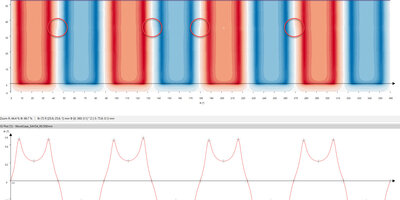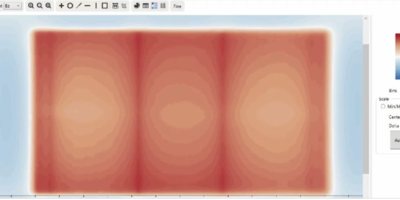Axial-flux permanent magnet motors are gaining popularity in hybrid and fully electric powertrains across the automotive, aviation, and electric bike industries. These motors feature short path axial-flux rotors, wherein the magnetic flux is aligned parallel to the axis of rotation. This design enables the creation of lighter, more compact motors that boast high torque density.
Introduction
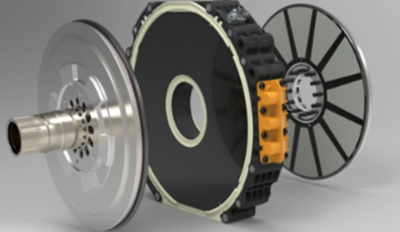
PROFILE
In this case study, we highlight a recent collaboration between Magcam and a top-tier electric vehicle motor development and manufacturing company. This innovative organization specializes in the creation of high-performance permanent magnet axial-flux motors.
CHALLENGES
Reliability is of utmost importance in the automotive industry. Automotive OEMs require evidence of the reliability and robustness of axial-flux motors for mass manufacturing, which has presented challenges. As a result, axial-flux motor suppliers have undertaken extensive validation programs to demonstrate that their motors' reliability is on par with traditional radial-flux types.
In this project, various axial-flux rotor designs with different diameters and layouts were evaluated. Key focus areas included magnetic properties such as magnetic field distribution, field homogeneity across different zones, and zero crossings analysis. Furthermore, the precision of magnet positioning was inspected using the magnetic field information from the concealed encapsulated magnets.
Additional objectives for the customer included accelerating the development of new designs and enhancing production yields in state-of-the-art axial-flux motor manufacturing technology.
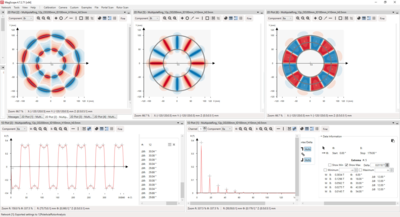
SOLUTION
Magcam's magnetic field scanners are expertly designed for rapid and precise quality inspection of permanent magnets and assemblies, including radial and axial-flux rotors. Our measurement systems can be seamlessly integrated into semi or fully automated production lines.
Efficiently identifying unexpected and challenging-to-simulate magnet quality issues, such as cogging torque, is made possible through the unique combination of a high-speed magnetic field scanning camera and the sophisticated data analysis features of MagScope, Magcam's measurement and analysis software.
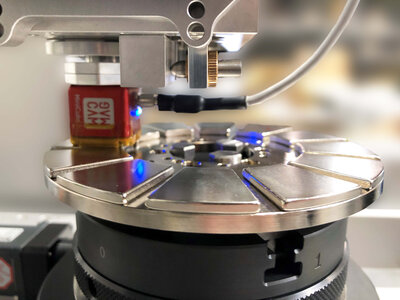
The axial-flux rotor scanning method, available for Magcam's Combi Scanner and Rotor Scanner configurations, benefits from all the renowned Magcam features. These include high radial and angular resolutions, integrated laser surface measurements for mechanical verification or runout correction measurements, rapid cycle times, and advanced in-line data analysis.
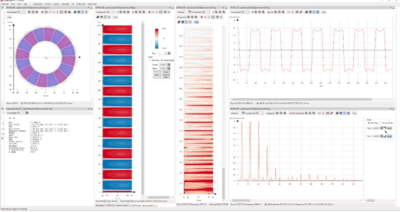
A significant challenge with axial machines is maintaining a uniform air gap between the rotor and stator, as the magnetic forces are considerably higher than in radial machines. To achieve the most accurate results, Magcam has developed an automated runout correction procedure using the integrated laser distance sensor.
Measurement time depends on the chosen angular and radial resolutions. Typical values range from 1.0° to 0.1° for angular resolution, and radial resolutions down to 0.1 mm are possible using the integrated Magcam MiniCube3D magnetic field camera.
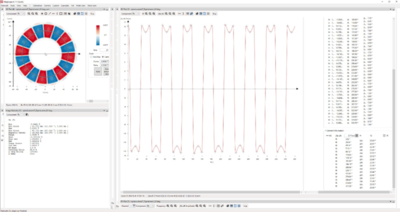
Magcam suggested using the initial test results as a starting point to identify correlations between good and bad rotors and establish guidelines for the final end-of-line tests. This process would ultimately define the relevant quality parameters for a Pass/Fail window. By identifying faulty rotors early in the production process, this approach improves production yield and reduces the number of scrapped components later on.
Additionally, the Magcam system can be utilized during the design and prototyping phases to detect magnetic issues early in development, thereby accelerating time-to-market.
On the dedicated Windows computer running Magcam's MagScope software, data is collected as raw information and can be exported in CSV format. The transfer of information to the customer's SQL database is accomplished using Python scripts, and daily reports are generated.
Meanwhile, Magcam has been developing a new cogging torque analysis method for axial-flux rotors, similar to the radial-flux rotor cogging torque analysis. This proven method has already been used by several users and is known for its powerful capability to predict a rotor's cogging torque before it is inserted into a stator.
A handheld barcode scanner was selected to facilitate a semi-automatic handling process in a prototype line. The operator's identity, the tools used, the rotor serial number, and other factors are processed to ensure the correct predefined measurement configuration is selected.
TESTIMONIAL
"We are currently designing a high-volume production line, and we are eager to integrate your technology," commented the project manager.
COMMISIONING AND TRAINING ON-SITE
Following the on-site installation by Magcam engineers and the mandatory factory acceptance tests, the customer's engineers received comprehensive training in programming measurement and analysis configurations (also known as 'networks') within the MagScope software. Additionally, operators were educated on managing the measurement process effectively. Calibration and maintenance procedures were also thoroughly reviewed and discussed
WHAT'S NEXT
Upon completion of the prototype testing process at the UK subsidiary, which was acquired last summer by a German premium-class car manufacturer, an innovative Magcam end-of-line testing setup will be integrated into a mass-production manufacturing line.
HISTORY
Initial discussions about this prototype line began nearly three years ago, following an earlier introduction of Magcam technology to senior engineering staff at trade shows and during personal meetings. Preliminary feasibility tests were conducted on a Magcam XY Portal Scanner, which produced excellent results but with inadequate cycle times. As a result, Magcam developed the Axial-Flux Rotor Scanner as an add-on for its portal and rotor scanner solutions.
Since then, Magcam's Axial-Flux Rotor Scanner has evolved into a standard product, garnering significant interest in the market.
OUTLOOK
As the global push for electrifying the mobility industry gains momentum, Magcam can play a vital role in helping motor manufacturers optimize their designs, accelerate their time-to-market, and ensure exceptional product quality.
Contact Magcam today to discuss your electric motor development project and take advantage of our unparalleled permanent magnet rotor measurement systems and unique expertise. Begin optimizing your motor design and quality with our exceptional solutions and support.

